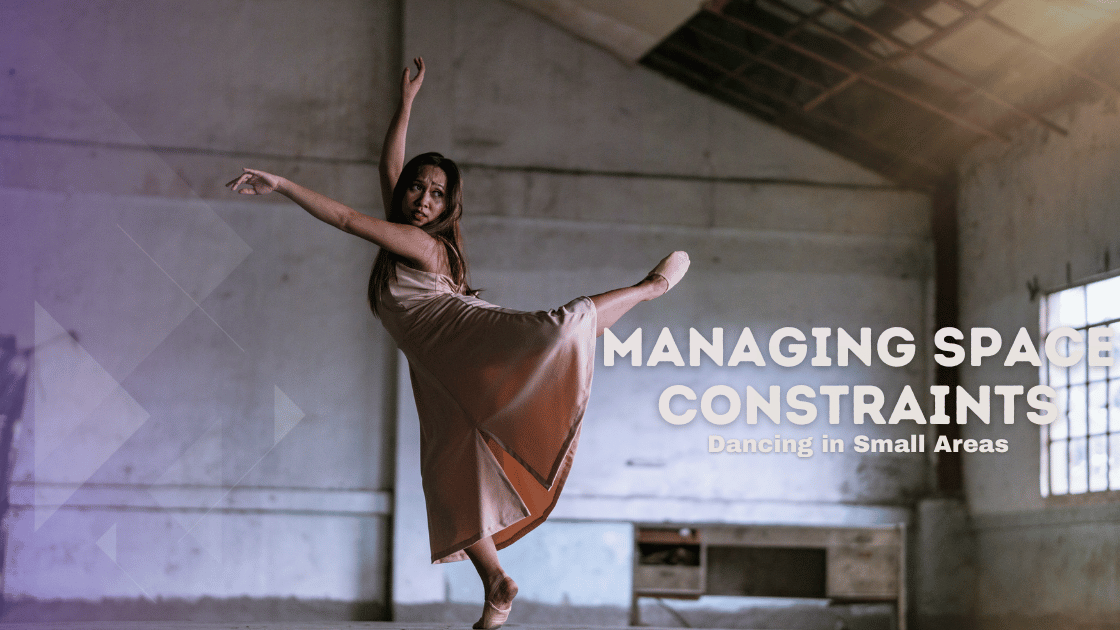Dancing in Small Areas
Dancing in small spaces can be a challenge, but it’s not impossible. Whether you’re practicing at home, in a dorm room, or in a compact studio, there are strategies and techniques to make the most of limited space. This article provides practical tips for managing space constraints, allowing you to continue enjoying and improving your dance practice regardless of the size of your dancing area.
Preparing Your Space
Clear the Area
- Declutter: Remove any unnecessary furniture or items from the area where you plan to dance. This will maximize the available space and minimize the risk of injury.
- Secure Loose Items: Ensure rugs, cords, and other loose items are secured or removed to prevent tripping.
Define Your Dance Zone
- Mark Boundaries: Use tape or mats to mark the boundaries of your dance space. This will help you stay aware of your limits and avoid collisions with walls or furniture.
- Mirror Placement: If possible, position a mirror within your dance area to monitor your movements and maintain proper form.
Adapting Your Movements
Modify Large Movements
- Scale Down: Adjust large, sweeping movements to fit within your confined space. For example, replace grand jetés with smaller jumps or switch traveling steps to in-place variations.
- Vertical Movements: Incorporate more vertical movements, such as jumps and lifts, to make use of the height of your space rather than just the floor area.
Emphasize Precision
- Focus on Technique: Use the limited space as an opportunity to refine your technique. Pay close attention to foot placement, body alignment, and the details of each movement.
- Controlled Movements: Practice controlled, deliberate movements to improve muscle strength and precision.
Creative Use of Space
Utilize Different Levels
- Floor Work: Incorporate floor work into your routines. Movements such as rolls, stretches, and low-level choreography can add variety and make full use of the space.
- Multi-Level Choreography: Combine standing, mid-level, and floor movements to create dynamic choreography within a small area.
Explore Different Directions
- Rotation and Pivoting: Incorporate more rotations and pivots into your dance to create the illusion of traveling even in a small space.
- Diagonal Movements: Use diagonal pathways rather than just forward and backward or side-to-side movements to maximize the space.
Equipment and Props
Compact Equipment
- Resistance Bands: Use resistance bands for strength training and flexibility exercises. They are small, portable, and effective for enhancing your dance practice.
- Portable Ballet Barre: A portable barre can be set up in small spaces for stability exercises and technique practice.
Props for Variation
- Scarves and Ribbons: Incorporate props like scarves or ribbons to add a creative element to your practice. They can enhance your expressiveness and help you focus on flow and continuity.
Sample Small Space Dance Routine
Warm-Up:
- Standing Stretches: Perform gentle stretches for the neck, shoulders, arms, and legs to prepare your body for movement.
- Core Activation: Engage your core with exercises like standing knee lifts and gentle twists.
Main Routine:
- Modified Basic Step: Practice a simplified version of a basic step (e.g., salsa or jazz) in place, focusing on hip and arm movements.
- Pivot Turns: Incorporate pivot turns to change direction and add dynamic movement.
- Floor Sequence: Perform a short floor work sequence, such as a roll to a seated position, extending legs, and returning to standing.
- Vertical Jumps: Add a series of small jumps or hops, using arm movements to enhance the vertical dimension.
Cool Down:
- Gentle Stretching: Conclude with a series of gentle stretches to relax your muscles and improve flexibility.
- Breathing Exercises: Focus on deep, calming breaths to center yourself and conclude your practice.
Dancing in small areas requires creativity and adaptability, but it can also be an opportunity to focus on technique and precision. By clearing and defining your space, modifying movements, and incorporating different levels and directions, you can effectively manage space constraints and continue to enjoy and improve your dance practice. Embrace the challenge and let your passion for dance shine, no matter the size of your dance floor







